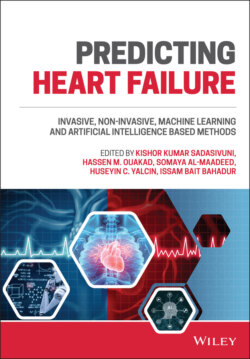Читать книгу Predicting Heart Failure - Группа авторов - Страница 79
2.6 Conclusion
ОглавлениеHeart diseases are very common nowadays and are one of the major contributors of world mortality rate. The prompt diagnosis of heart disease can reduce the casualty as well as mortality associated with the risk of heart disease to a great extent. Today, due to the technological advancement in signal processing, medical imaging, sensors, etc., diagnosis of heart disease and finding the underlying specific reasons is not hard. Future versions of the medical devices, including the stethoscope and ECG machines, will utilize AI technologies for efficient detection of heart abnormalities in hospitals and clinics. However, conventional methods will also be used alongside advanced methods, with most of the former, including inspection and palpation, being cost-effective and not requiring any advanced devices or sensors. Recent advancements that enabled the development of neural network-based stethoscopes will reduce the effort of physicians to perform conventional auscultation examinations.
This chapter has briefly discussed the various conventional clinical methods for heart disease prediction and has presented several physiological attributes considered by the physician for diagnosing heart disease. The clinical significance of psychological attributes has also been discussed and we provided a brief history of the devices utilized by cardiologists, physicians, and radiologists for heart examination. The chapter ended by providing a brief discussion on how AI can assist physicians as well as a radiologists in cardiovascular examination.
